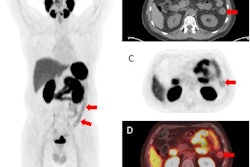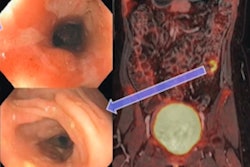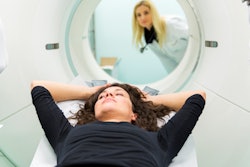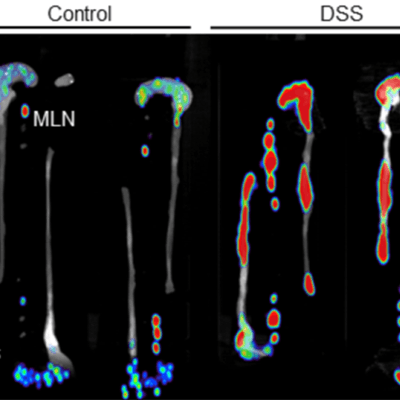
Researchers have used a new PET tracer to identify areas of inflammation in the colon in mice. The technique could eventually be able to improve the visualization and diagnosis of inflammatory bowel disease (IBD) in humans, according to an article published in the June issue of the Journal of Nuclear Medicine.
Most standard methods for assessing the extent of inflammation in the colon involve invasive procedures such as colonoscopy and biopsy. One potential noninvasive option for monitoring intestinal inflammation is to examine F-18 FDG uptake via PET imaging. However, there is considerable variability in FDG uptake in the human gut that limits the method's viability when screening for IBD, according to the authors (JNM, Vol. 59:6, pp. 980-985).
Seeking a more reliable radiopharmaceutical probe to detect inflammation in the colon, a group from the University of California, Los Angeles (UCLA) discovered that the GK1.5 cys-diabody (cDb) has a strong affinity for CD4+ T cells, which commonly appear in colons affected by IBD.
To test its effectiveness, they radiolabeled GK1.5 cDb with zirconium-89 (Zr-89) and injected the resulting immuno-PET probe into mice with and without inflammatory bowel disease. They found that Zr-89 GK1.5 cDb was able to detect CD4+ T cells in the colon, cecum, and mesenteric lymph nodes of the mice.
What's more, an analysis of PET/CT scans of these mice revealed that the uptake of the Zr-89 radiotracer was 3.9-fold higher in the colon, 3.1-fold higher in the cecum, and 3.0-fold higher in the mesenteric lymph nodes of the mice with IBD than in those without IBD.
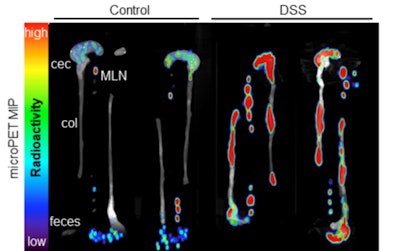 Immuno-PET scans of the colon (col), cecum (cec), and mesenteric lymph nodes (MLN) of mice with dextran sulfate sodium (DSS)-induced IBD and without (control). Image courtesy of Amanda Freise, PhD, and colleagues from UCLA.
Immuno-PET scans of the colon (col), cecum (cec), and mesenteric lymph nodes (MLN) of mice with dextran sulfate sodium (DSS)-induced IBD and without (control). Image courtesy of Amanda Freise, PhD, and colleagues from UCLA."CD4 immuno-PET could provide a noninvasive means to detect and localize sites of inflammation in the bowel and also provide image guidance for biopsies if needed," senior author Anna Wu, PhD, said in a statement released by the Society of Nuclear Medicine and Molecular Imaging (SNMMI). "Assessment of CD4 infiltration could also potentially provide a means for detection of subclinical disease, before symptoms occur, and provide a readout as to the efficacy of therapeutic interventions."
Wu also noted that the ability to directly image immune responses using the Zr-80 GK1.5 cDb or similar immuno-PET probes could have a wide range of clinical applications.
"It could unlock our ability to assess inflammation in a broad spectrum of disease areas, including oncology and immuno-oncology, autoimmunity, cardiovascular disease, neuroinflammation, and more," she said.





